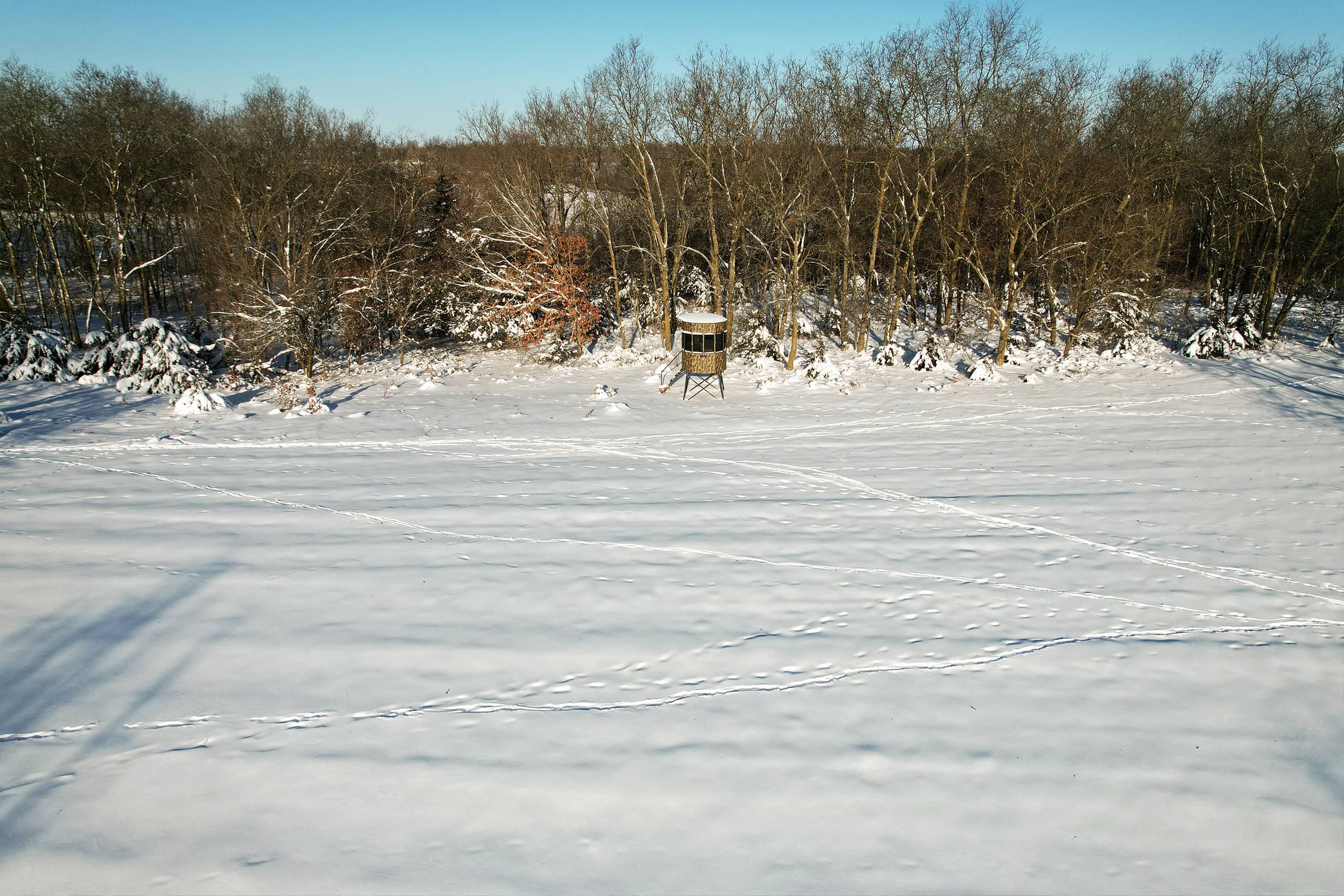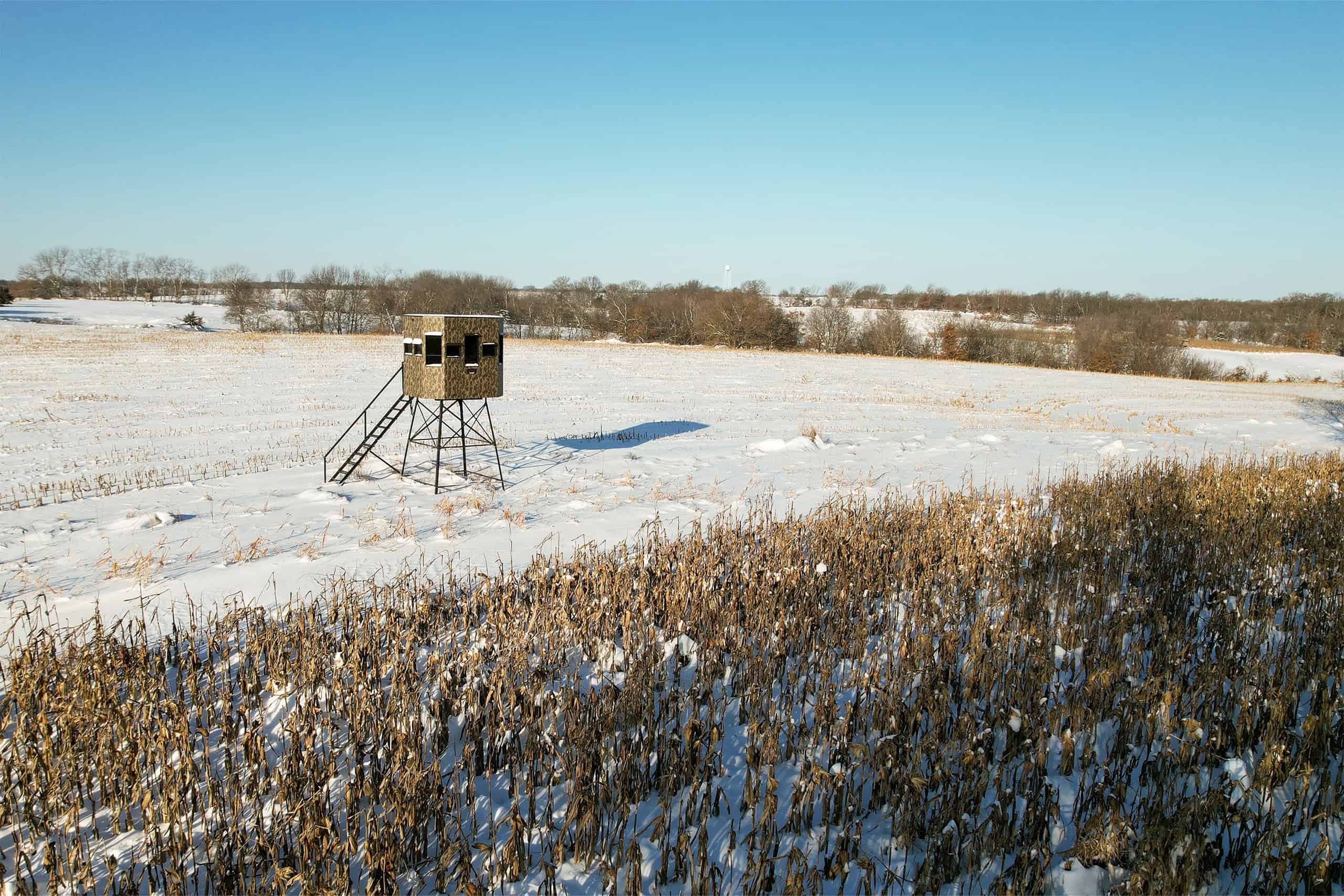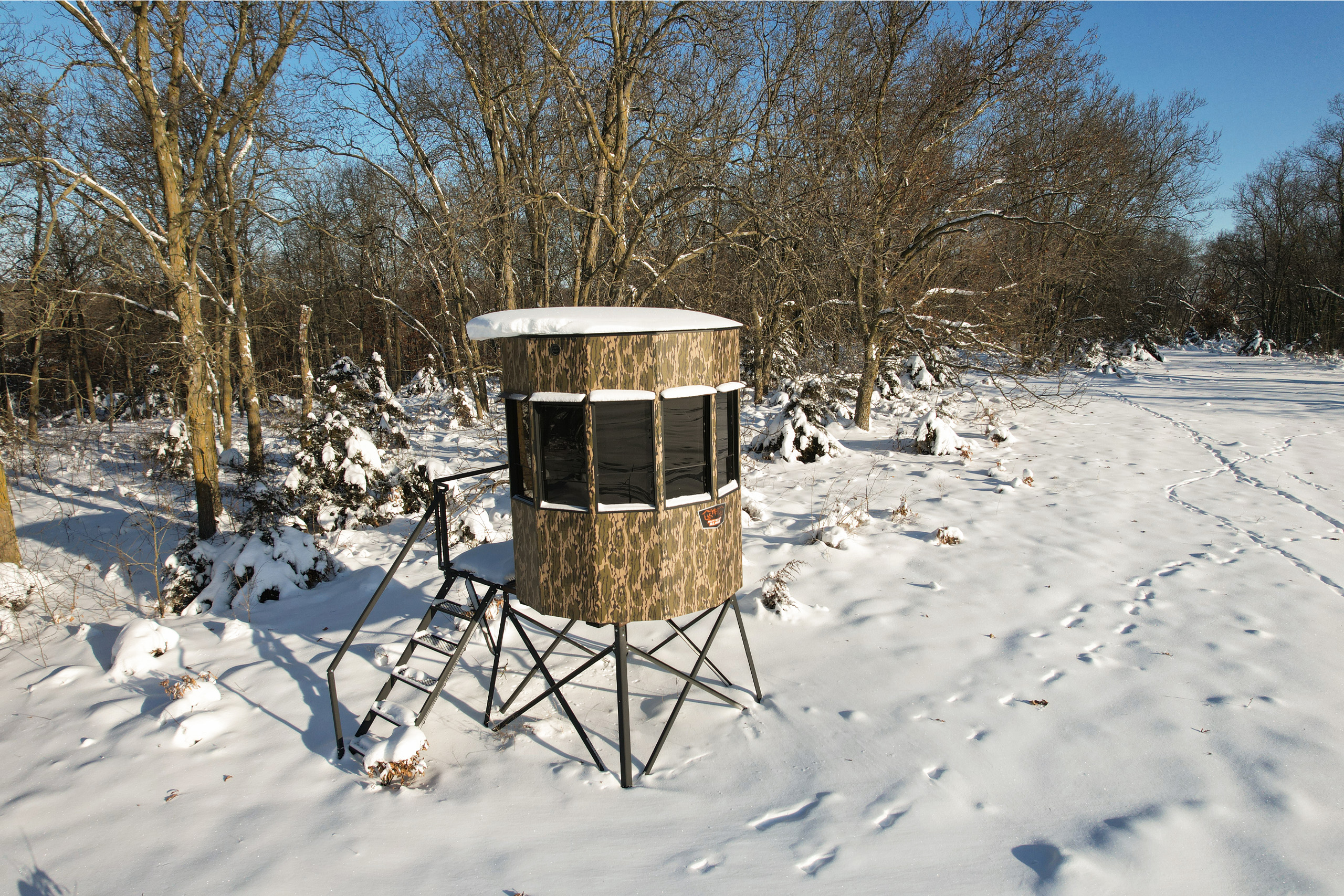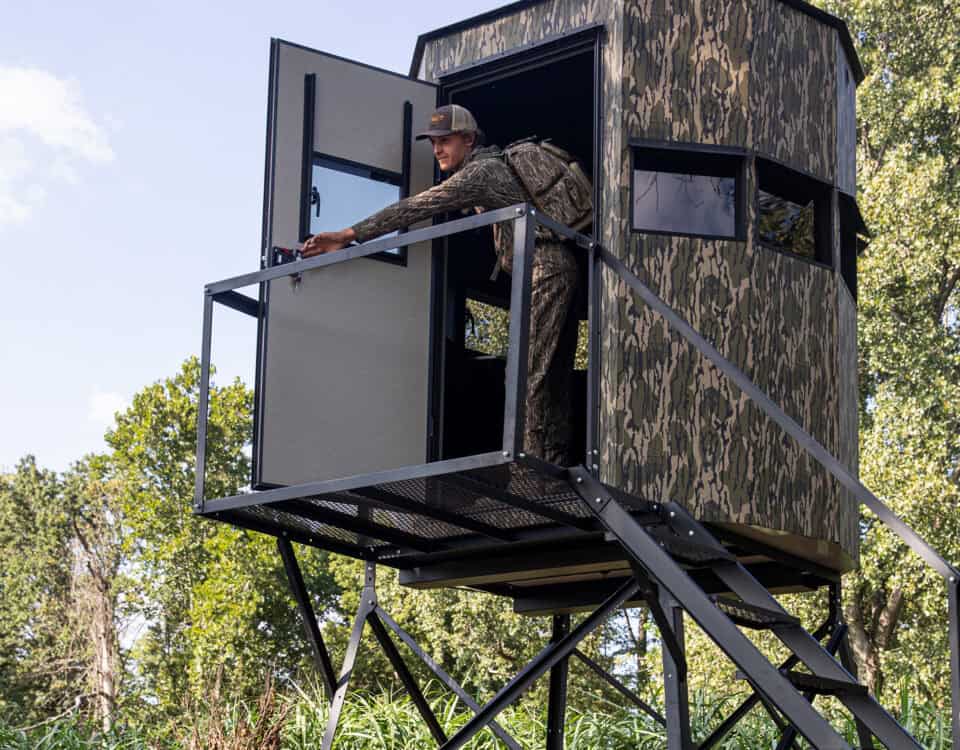Hunting and Frostbite

Introduction to Scent Control for Bowhunting
October 24, 2024
Best Blinds for Late-Season Hunts
October 24, 2024Hunting in cold weather can be a rewarding experience, but it also comes with unique risks. When temperatures plummet, hunters face the danger of frostbite, especially during long hours of stillness in the field or while tracking game. While the thrill of the hunt often appeals to those of us who want to push our limits and drive ourselves beyond them, it’s essential to know when the cold becomes dangerous. Frostbite can cause permanent damage to your body, making it crucial to understand how to prevent, recognize, and treat it in real time. For hunters, this means dressing properly, monitoring symptoms, and using equipment like Rutted-Up insulated blinds to stay warm and protected from the elements.
What is Frostbite?
Frostbite is a serious cold-weather injury that occurs when your skin and underlying tissues freeze due to prolonged exposure to freezing temperatures. It most commonly affects extremities like the toes, fingers, ears, nose, and cheeks—parts of the body farthest from the heart and other vital organs; these extremities are where blood flow is reduced in cold conditions. The body’s natural response to cold is to protect vital organs by directing more blood to the core, leaving these extremities vulnerable to frostbite. If left untreated, frostbite can cause permanent damage, including the loss of feeling and the worst of all possibilities in the most extreme cases: amputation.
There are three levels of frostbite severity—frostnip, superficial frostbite, and deep frostbite—each with increasing levels of tissue damage.
The Different Stages of Frostbite
Frostbite progresses through three distinct stages, each more dangerous than the last:
- Frostnip: This is the earliest and mildest form of frostbite. It occurs when the skin is exposed to cold, causing it to become red, cold, and numb. While the tissue remains intact, frostnip is a warning sign that you need to warm up before more serious damage occurs. It is fully reversible if the skin is warmed in time, leaving no permanent damage.
- Superficial Frostbite: At this stage, the skin itself begins to freeze, and ice crystals can form within the tissues. The affected skin may turn white or pale and could feel warm or stingy, a sign that nerve damage is beginning. Blisters may form, and permanent damage is setting in.
- Deep Frostbite: This is the most severe stage, where deeper layers of skin and tissue freeze, leading to more severe, irreversible damage. The skin may turn black as tissue death occurs, and large blisters develop on the skin. Once deep frostbite sets in, affected areas may feel numb and hard, and extensive medical treatment is required. Without intervention, amputation may be necessary to prevent the spread of infection.
Essential Tips for Staying Warm
The best strategy for avoiding frostbite while hunting is prevention. When out in the field in the late season, exposure to cold is inevitable for most of us, but there are several proactive measures you can take to stay warm and avoid frostbite.
- Layering Clothing: Wear multiple layers of clothing to trap warm air close to your body. Start with a moisture-wicking base layer to keep sweat off your skin, followed by an insulating layer such as wool or down. Finally, use a windproof and waterproof outer layer to protect against the elements.
- Stay Hydrated and Eat High-Energy Snacks: Dehydration and lack of calories decrease circulation, making it harder for your body to keep extremities warm. Drink plenty of water and eat energy-rich foods like nuts, jerky, or energy bars to maintain your body heat.
- Use Hand and Foot Warmers: Disposable hand and foot warmers are a great way to add extra warmth to gloves and boots. You can also place them in your pockets to warm your hands between shots or when you’re sitting still in a blind.
- Take Frequent Breaks: If you’re out for long periods, take time to move around and get your blood flowing. Cold temperatures and long periods of stillness slow down circulation, so a few minutes of light movement can help keep your body warm.
- Monitor Weather Conditions: Be aware of temperature changes and increasing wind chill. Severe winds can quickly lower the temperature and accelerate frostbite risk. If the weather worsens, it’s important to have an exit strategy or warm shelter nearby.
How to Identify Frostbite Symptoms Early
Recognizing the early signs of frostbite is critical; this will help you to avoid severe damage by taking steps before it is too late. Frostbite symptoms often start subtly, especially when you’re focused on the hunt. Being mindful of how your body feels and checking for changes in your skin can help you catch frostbite before it progresses to a more dangerous stage.
- Cold, Red, Gray, or Pale Skin: When frostbite first sets in, your skin may feel unusually cold, stiff, or numb. Redness is common in the early stages, but as frostbite progresses and depending on skin color, the skin may become pale or even white, or you may notice a gray or bluish tint to affected areas.
- Tingling or Prickling Sensation: As ice crystals begin to form, you may experience a tingling, prickling, or burning sensation. This discomfort can be ignored but it should be a critical red flag warning that you need to warm the affected area quickly, since permanent damage is beginning.
- Numbness: As frostbite worsens, numbness will set in, which can be deceptive because the absence of pain might make you think the danger has passed. However, numbness indicates that more tissue damage is occurring, and the area undergoing permanent injury.
- Hard or Waxy Skin: In more advanced frostbite, the skin may start to feel hard or waxy. This is a sign that ice has penetrated deeper into the tissue, and immediate care is required to minimize the permanent damage.
By catching these early symptoms and taking steps to warm up in the early stages, you can prevent the progression of frostbite and protect your fingers and toes for the future (and future hunts).
First-Aid Treatment for Frostbite in the Field
If frostbite symptoms set in while you’re out hunting, it’s important to act quickly and decisively. Early intervention can prevent minor frostbite from progressing into something more serious, but once frostbite becomes advanced, the treatment options become limited.
- Move to a Warm Shelter: As soon as you notice frostbite symptoms, such as numbness or tingling, get out of the cold as quickly as possible. If there’s no immediate shelter, find a windbreak or any available cover to minimize further exposure. A Rutted-Up Blind with a small heater for these types of emergencies would be ideal.
- Gently Warm the Affected Area: For mild cases of frostnip, warm the affected area using body heat. For example, place your cold fingers under your armpits or press your hands against your abdomen. Do not rub the frostbitten area, as this can damage the skin and tissues. If you’re with someone else, they can help by using their body heat to gently warm your hands or feet.
- Avoid Direct Heat: While it may be tempting to warm your skin near a campfire or with a hot water bottle, this can cause burns (it’s hard to tell if you are too close to the fire when you’re numb). If you use any heat source, make sure it’s lukewarm and not hot. Water right around 100º F is an ideal solution. But there is one caveat: you should avoid rewarming frostbitten areas if immediately afterwards they will freeze again. As strange as that sounds, the freezing, thawing and refreezing process causes terrible damage and should be avoided if at all possible.
- Hydrate and Nourish: Drink warm fluids (non-alcoholic) to help boost blood flow and keep your body temperature regulated. Eating high-energy snacks can also help your body generate heat.
- Get Professional Medical Help: If frostbite symptoms worsen or if deep frostbite develops, seek medical attention immediately. Deep frostbite requires more advanced care and serious permanent damage can result.
Choosing the Right Gear to Avoid Frostbite
The right gear is your first line of defense against frostbite during cold-weather hunts. Investing in high-quality, insulated equipment ensures you stay comfortable, even in extreme temperatures. Here are the essential gear considerations for preventing frostbite:
- Insulated Outerwear: Choose jackets and pants made with high-grade insulation materials like down or synthetic fibers. Look for windproof and waterproof shells to protect against harsh winds and snow. For added protection, insulated hunting bibs provide coverage to your core and lower body.
- Gloves and Mittens: Your hands are highly susceptible to frostbite, so invest in insulated gloves that are windproof and waterproof. For extreme conditions, consider mittens, as they retain heat more effectively than gloves by keeping your fingers together.
- Face and Neck Protection: A balaclava or face mask is important to protect your vulnerable ears, nose, and cheeks, which are all highly susceptible to frostbite. Pair it with a neck gaiter or scarf to cover exposed skin when the wind is particularly harsh (or stay out of the wind altogether with an insulated blind).
- Base Layers: Merino wool or synthetic base layers are ideal for wicking away moisture and providing insulation. Cotton should be avoided as it retains moisture and loses its insulating properties when wet, increasing the risk of frostbite.
- Rutted-Up Insulated Blinds: For hunters who spend long hours sitting in cold weather, Rutted-Up insulated blinds are a game-changer. These blinds are built to trap heat and are airtight which will shield you from the wind, keeping your entire body warm. By using an insulated blind, you can reduce the risk of frostbite significantly while still staying out in the field for as long as you need to.
The Importance of Warm Footwear in Cold Weather
Cold feet are one of the biggest threats to hunters, as the toes are particularly prone to frostbite. Wearing the right boots and socks is critical to maintaining warmth and circulation during your hunt.
- Insulated Boots: Look for boots that are waterproof and insulated with high-quality materials like Thinsulate or wool. Choose a pair with a removable liner, which allows you to dry the inside of the boots if they become damp during long days in the field.
- Roomy Fit: Make sure your boots aren’t too tight, as restricted circulation can lead to cold feet and increase the risk of frostbite. You should be able to wiggle your toes freely inside your boots, even when wearing thicker socks.
- Wool Socks: Wool is your best option for socks in cold weather. It wicks away moisture while maintaining its insulating properties, even when damp. Consider wearing two layers of socks—a thin liner sock to wick moisture and a thicker wool sock for warmth. It’s a good idea to carry extra socks and change them if they get wet when you are facing a particularly long day or severe weather.
- Avoid Overheating: When hiking to your hunting spot, your feet may start to sweat. If your feet sweat, the moisture can cool quickly once you sit down, increasing the risk of frostbite. Try to keep a relaxed pace if you can, and if not, adjust your layers and boot ventilation if possible to prevent overheating during strenuous activity.
Mental Awareness: Knowing When to Stop and Warm Up
One of the most important, yet often overlooked, factors in preventing frostbite is mental awareness. As a hunter, it’s easy to get caught up in the excitement of tracking game or waiting for the perfect shot. However, pushing yourself too far in freezing temperatures can quickly lead to dangerous frostbite symptoms. Listening to your body and recognizing early warning signs of cold-related injuries is crucial for staying safe.
Pay close attention to any numbness, tingling, or unusual sensations in your fingers, toes, nose, and ears. If you feel any of these symptoms, it’s time to stop and warm up—ignoring them could lead to permanent tissue damage. It’s easy to convince yourself to keep pushing, especially when you’re close to making a kill or feel pressured by time, but frostbite can happen faster than you probably realize. The key is knowing when to prioritize your health and retreat to a warm environment.
Remember, no game is worth the risk of serious injury. If you start feeling extreme cold or lose feeling in your extremities, take a break, move around to get your blood flowing, or return to your base camp to warm up. Knowing your limits and making the decision to pause could save you from long-term consequences.
Rutted-Up Insulated Blinds: Your Best Defense on Frosty Days
One of the best ways to protect yourself from frostbite while hunting in extreme weather conditions is to use a Rutted-Up insulated blind. These blinds are specially designed to keep hunters warm and comfortable, even in the harshest winter environments. With thick insulation and a windproof design, Rutted-Up Blinds provide a barrier against freezing temperatures, making them an essential tool for long, cold hunts that would otherwise risk frostbite.
By using an insulated blind, you can maintain your body heat for extended periods, reducing the risk of frostbite. The airtight design helps trap warmth inside while keeping cold air out, ensuring that you stay protected from bitter winds and snow. This is especially important when sitting for long hours exposed to the elements and staying dead still for fear of scaring off potential prey, as the lack of movement can make you more vulnerable to cold exposure.
Not only do Rutted-Up Insulated Blinds keep you warm, but they go beyond providing toe-saving warmth: they also preserve you from discomfort, allowing you to stay in the game and focused on the hunt all day. With enough room to move around and adjust, these blinds let you keep circulation going, preventing frostbite from setting in.
For hunters who take cold-weather conditions seriously, Rutted-Up Blinds are the best defense against frostbite, enabling you to stay in the field longer without compromising your safety or comfort.
Final Thoughts: Staying Safe and Warm in the Field
Hunting in cold weather offers a unique challenge, and staying safe from frostbite is crucial for a successful hunt. By staying aware of frostbite symptoms, choosing the right gear, and knowing when to take a break, you can enjoy the thrill of hunting without risking serious injury.
Rutted-Up Insulated Blinds offer the ultimate solution for keeping warm during long, cold hunts. Their superior insulation and windproof design give you the protection you need to stay out in the field longer while reducing the risk of frostbite. When paired with smart layering, proper footwear, and awareness of the stages of frostbite, these blinds can be your best ally in extreme conditions.
Gear up with Rutted-Up Insulated Blinds and make cold-weather hunting safe, comfortable, and successful. Stay warm, stay safe, and enjoy your time in the field this season!



